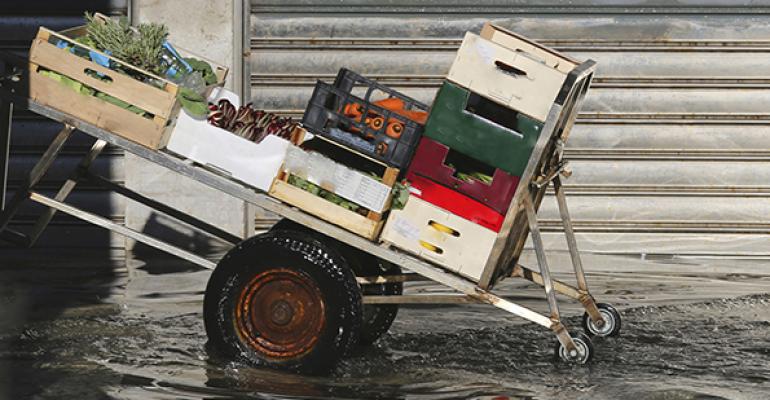High-impact weather events—hurricanes, floods, tornados—capable of inflicting major damage on restaurants are thankfully few and far between. Much more frequent are violent summer storms that don’t produce widespread devastation but still deliver a blow to restaurants that lie in their path. When one of these storms hits, even operations that escape relatively unscathed have plenty to do before they can reopen their doors to the public.
The key to a rapid recovery: Have a plan.
“The combination of an unexpected emergency and a lack of preparedness can wreak havoc on a retail outlet or restaurant,” says David Mesko, senior director of marketing for Cincinnati-based Cintas Corp. “By taking the proper steps to restore your facility after a storm, you can limit the extent of the damage and reduce the downtime and lost revenue associated with recovery.”
Here are five steps Cintas recommends restaurant operators take to minimize the impact severe weather can have on their business:
1. Consider safety hazards. Be watchful of safety hazards, such as loose debris or shock hazards. Educate your employees on know how to shut off electricity in the affected areas and be aware that even if the electricity is down, it is oftentimes restored without notice.
2. Examine exterior doors and windows. Exterior windows and doors are two of the most important items to assess after a storm. Inspect handles, locks and weather strips to ensure they are in proper working order. If the windows and doors are damaged and need repairs, board them up or restore them promptly to protect your facility from further weather damage and possible break-ins.
3. Disinfect contaminated surfaces. When cleaning up after a storm, remove and dispose of all flood-contaminated materials and properly disinfect all surfaces. Take care when handling contaminated materials to avoid spreading contaminants to other surfaces. Don’t forget that wall cavities, studs and other fixtures will also need to be properly disinfected and deep cleaned.
4. Restore plumbing and water lines. Backflow and clogs are a common occurrence in flood-damaged facilities. To avoid unnecessary sewage and drain line backups, you may need to call in a professional to extract and jet the pipes. By ensuring plumbing lines are clear and toilets and sinks are working properly, you can limit the chance for restroom closures and odor issues.
5. Deep clean floors. If your floors have been affected by floodwaters, they will need to be deep cleaned, regardless of floor type. By combining temperature, agitation, chemicals and extraction, deep cleaning removes dry particulate soil and residue, and guards against lingering odors from flood water contamination. Deep cleaning methods that use cleaning chemicals, dwell time and high-pressure steam can also effectively minimize bacteria and sanitize floors.
Some operators will be able to handle these cleanup and restoration tasks on their own. Others will want to call in the experts. If you’re part of this latter group, have the key phone numbers or other contact information ready before the storm hits.





